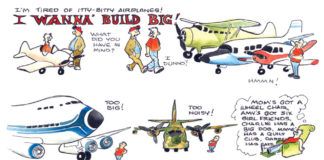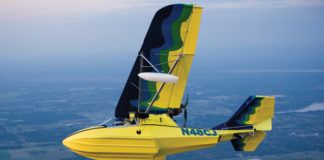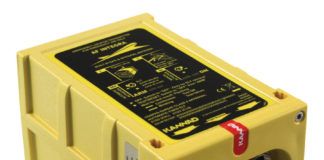F-1 Registration
In “Ten Years With a Time Machine” [September 2015], Dave Forster states that he lives in Houston, Texas, yet his plane appears to have Canadian registration. How is this explained?
–Elton Folkerts
Dave Forster Responds: Well spotted, and good question! There is a little-known regulation that states I can have a U.S.-registered house, a U.S.-registered car, and a U.S.-registered wife, but not a U.S.-registered airplane unless I possess either a Green Card or American citizenship—I had neither at the time I started the project.
Shortly before deciding to build the Rocket, I was transferred to Houston by my U.S. employer under a work visa. I was keen to build and didn’t want to wait until the Green Card application was processed before starting. It’s a good thing I didn’t wait; building the airplane took about 3-1/2 years, but building the Green Card took over twice as long!
Fortunately, American and Canadian regulations for building an Experimental/Amateur-Built aircraft are very similar, and each country recognizes the other’s airworthiness certificates. This made it possible to build an aircraft in the U.S. on Canadian paperwork, receive a Canadian Special Certificate of Airworthiness, yet have my inspections performed by a U.S. Designated Airworthiness Representative (DAR). As an added bonus, Canadian registration allows for custom registration markings not possible in the U.S.—an F1 Rocket registered as C-FWON!
Load Distributions
Using information provided in “Stressing Structure” [August 2015], I want to verify the designer’s claim that my all-wood, two-place, low-wing LSA airplane will withstand a 9 G load. If the pilot and passenger are sitting on the spar, is that part of the wing weight?
–Chuck Cary
David Paule Responds: When calculating loads on a spar, it’s important to consider not only the air loads, but also the loads due to the weights of things, the effective location of these items on the spar, and how and where the spar is supported. In my examples, the support was on the left end of the structure and the load started at the right end of the structure. For a real structure, these might be anywhere.
The actual real distances are used to find the shear and bending moments. So are the real weights and air loads, wherever they occur. Generally, the weight of items such as people or fuel or equipment act opposite to the air load. Remember that some weights can vary or even go away. Examples are fuel or passengers or heavy or light pilots. Aerodynamic changes such as extending the flaps or deflecting the aileron also change the applied load.
Every load case and every flight condition must be checked.
There are two aspects to spar strength. The first is the loads on it. The other is the actual strength of the spar. Both need to be assessed over the entire length of the spar, inch by inch. There might be related structure or attachments which will share the load or affect the strength, and you’ll need to include those effects too.
I strongly recommend using “ANC-18, Design of Wood Aircraft Structures,” for the analysis of any wood aircraft. It’s available here: westcoastpiet.com/construction.htm.
Write to [email protected].




